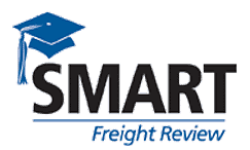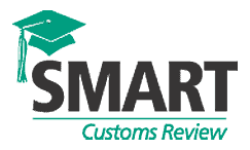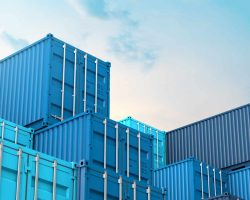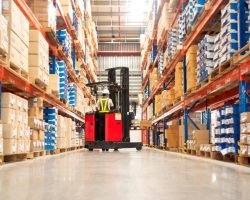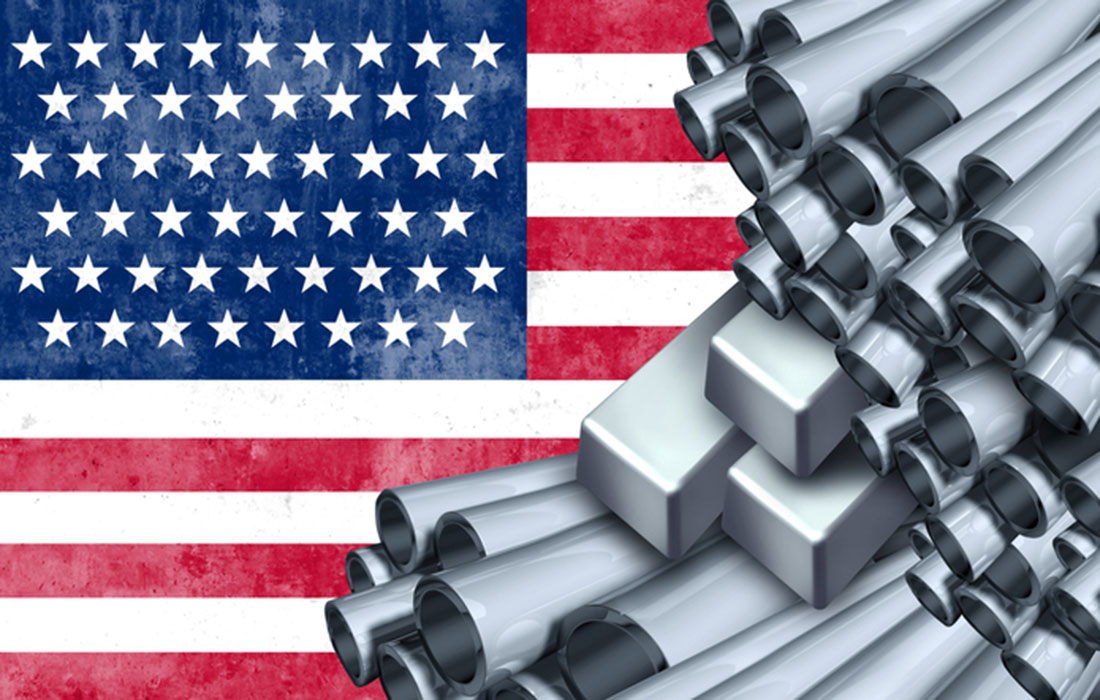
US President Donald Trump signed an order doubling the Section 232 tariffs on steel and aluminium imports from 25 percent to 50 percent effective 12:01am EDT June 4, 2025 under Proclamation “Adjusting Imports of Aluminum and Steel into the United States”.
- Imports of UK origin aluminum and steel continue to be subject to 25 percent tariffs under the US-UK Economic Prosperity Deal of May 8, 2025 (EPD).
- The value of the steel and/or aluminum that originates from the United States will not be subject to the Section 232 duties. The non-US origin steel and/or aluminum content will be subject to 50 percent tariff, while the remaining value of the non-steel and/or aluminum components will be subject to the country of origin’s Reciprocal Tariff rate currently in effect.
US Customs and Border Protection (CBP) have issued Updated Guidance via the Cargo Systems Messaging Service to outline the changes to the HS classifications and reporting requirements:
CSMS # 65289012 – UPDATED GUIDANCE: Import Duties on Imports of Steel and Steel Derivative Products
Where “Derivative Products” were previously subject to the additional tariff on the full value of the goods, under the Updated Guidance, the tariff is only applicable to the steel and/or aluminum content value, as identified in the following revised Derivative Products lists:
Effective 12:01am EDT on June 23, 2025 the following additions to the Steel Derivative list took effect:
- combined refrigerator-freezers under HTSUS 8418.10.00
- small and large dryers under HTSUS 8451.21.00 and 8451.29.00
- washing machines under HTSUS 8450.11.00 and 8450.20.00
- dishwashers under HTSUS 8422.11.00
- chest and upright freezers under HTSUS 8418.30.00 and 8418.40.00
- cooking stoves, ranges, and ovens under HTSUS 8516.60.40
- food waste disposals under HTSUS 8509.80.20
- welded wire rack under HTSUS 9403.99.9020
- All other tariff codes for steel and steel derivative products remain unchanged.
- BIS notes that the aluminum content of products classified under HTSUS 9403.99.9020 also continues to be subject to the Section 232 tariff on imports of aluminum.
Importers should ensure Derivative Products indicate the applicable steel and/or aluminum content values on documentation in order to ensure tariffs are applied correctly.
Application of Reciprocal Tariffs
- Previously, goods subject to the Steel and Aluminum tariff (Section 232) were exempt from the Reciprocal Tariff (IEEPA).
- As of June 4, 2025, the non-steel and/or aluminum content of an article is now subject to the Reciprocal Tariff, and the steel and/or aluminum content is subject to Section 232 duties.
- Where no breakdown of the steel and/or aluminum content is provided, the 50 percent tariff will apply to the full value of the Derivative Product goods.
Reporting Instructions for Duties Based on Aluminum Content
For new aluminum derivatives outside of Chapter 76 subject to Section 232 aluminum duties, and all aluminum and aluminum derivative articles classified in Chapter 76 subject to Section 232 duties, the 50 percent duty (25 percent duty for products of the UK) is to be reported with the Chapter 99 classification based upon the value of the aluminum content.
If the value of the aluminum content is the same as the entered value or is unknown, the duty must be reported under the Chapter 99 classification based on the entire entered value, and reported on only one entry summary line.
Where the value of the aluminum content is less than the total entered value of the imported article, the good must be reported on two lines. The first line will represent the non-aluminum content while the second line will represent the aluminum content. Each line should be reported in accordance with the below instructions.
Non-Aluminum content, first line:
- Ch 1-97 HTS, this same HTS must be reported on both lines.
- Country of origin, same must be reported on both lines.
- Total entered value of the article less the value of aluminum content.
- Report the total quantity of the imported goods.
- Report all other applicable duties, such as IEEPA tariffs and antidumping and countervailing duties.
Aluminum content, second line:
- Same Ch. 1-97 HTS reported on the first line.
- Same country of origin reported on the first line.
- Report 0 for quantity for the Ch. 1- 97 HTS.
- Report the value of aluminum content.
- Report the Section 232 duties based on the value of aluminum content with the Chapter 99 HTS.
- Report a second quantity (of the aluminum content) in kilograms with the Chapter 99 HTS.
- Report all other applicable duties, such as IEEPA tariffs and antidumping and countervailing duties.
Reporting Instructions for Duties Based on Steel Content
For new steel derivatives outside of Chapter 73 subject to Section 232 steel duties, and all steel and steel derivative articles classified in Chapter 73 subject to Section 232 duties, the 50 percent duty (25 percent duty for products of the UK) is to be reported with the Chapter 99 classification based upon the value of the steel content.
If the value of the steel content is the same as the entered value or is unknown, the duty must be reported under the Chapter 99 classification based on the entire entered value, and report on only one entry summary line.
In the case where the value of the steel content is less than the entered value of the imported article, the good must be reported on two lines. The first line will represent the non-steel content while the second line will represent the steel content. Each line should be reported in accordance with the below instructions.
Non-Steel content, first line:
- Ch 1-97 HTS, this same HTS must be reported on both lines.
- Country of origin, same must be reported on both lines.
- Total entered value of the article less the value of steel content.
- Report the total quantity of the imported goods.
- Report all other applicable duties, such as IEEPA tariffs and antidumping and countervailing duties.
Steel content, second line:
- Same Ch. 1-97 HTS reported on the first line.
- Same country of origin reported on the first line.
- Report 0 for quantity for the Ch. 1- 97 HTS.
- Report the value of steel content.
- Report the Section 232 duties based on the value of steel content with the Chapter 99 HTS.
- Report a second quantity (of the steel content) in kilograms with the Chapter 99 HTS.
- Report all other applicable duties, such as IEEPA tariffs and antidumping and countervailing duties.
Melt and Pour Reporting Requirements
The reporting of the country of melt and pour and applicability code is mandatory for both steel and steel derivatives. To report the country of melt and pour, importers must report the International Organization for Standardization (ISO) code on steel articles and derivative steel articles subject to Section 232. For steel articles, importers must report the ISO code where the steel was originally melted and poured. For steel derivatives, importers must report the ISO code where the steel was originally melted or “OTH” (for other countries). For products melted and poured in the United States, importers must indicate “US” as the country of melt and pour.
Exclusions and Drawback
Importer-specific product exclusions for Section 232 duties that are active in the Automated Commercial Environment (ACE) shall remain effective until their expiration date or until excluded product volume is imported, whichever occurs first.
No drawback shall be available with respect to the duties imposed.
For more information, contact Brian Rowe, Director – Customs Compliance & Regulatory Affairs.
